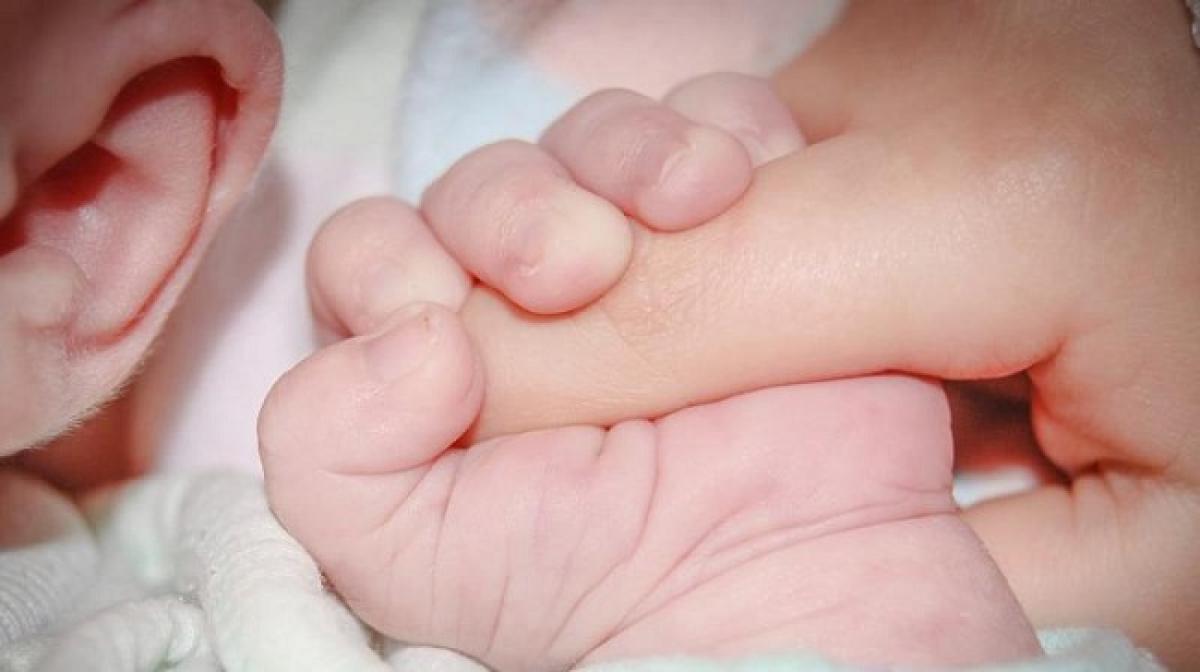Live
- FIIs remain net investors in India this year amid robust economy, resilient market
- Telangana government grants extended timings for pubs and parties on the eve
- Beed sarpanch murder: Kin, Maha Oppn parties, social groups take out silent march
- UAE Tops Global Mobile Internet Speeds; India Ranks 25th Worldwide
- Over one third Americans take on debt in holiday spending: Survey
- Climate change risks impacting financial system, need India-specific data: RBI’s Rajeshwar Rao
- Nitish Kumar Reddy is a star of Indian cricket, says Sunil Gavaskar
- Winter Hydration Made Easy: 5 Essential Tips to Stay Healthy
- 19 Pakistani soldiers, 3 Afghan civilians killed in clashes between Afghan-Pak border forces
- Kolusu Parthasarathy Lauds Nitish Kumar Reddy
Just In

About 8,02,000 infant deaths were reported in India in 2017, the lowest in five years, according to the United Nations Interagency Group for Child Mortality Estimation UNIGME
New Delhi: About 8,02,000 infant deaths were reported in India in 2017, the lowest in five years, according to the United Nations Inter-agency Group for Child Mortality Estimation (UNIGME).
A new UNIGME report said 6,05,000 neonatal deaths were reported in India in 2017, while the number of deaths among children aged 5 to 14 was 1,52,000. About 8,02,000 infant deaths were reported in India in 2017, the report said.
"India continues to show an impressive decline in child deaths, with its share of global under-five deaths for the first time equalling its share of childbirths," Yasmin Ali Haque, Representative, UNICEF India said.
"The efforts for improving institutional delivery, along with countrywide scale-up of special newborn care units and strengthening of routine immunisation, have been instrumental towards this," she said.
The number of infant deaths has come down from 8.67 lakh in 2016 to 8.02 lakh in 2017. In 2016, India's infant mortality rate was 44 per 1,000 live births. In 2017, sex-specific under-five mortality rate was 39 in 1,000 for male and 40 in 1,000 for females.
"Even more heartening is the fourfold decline in the gender gap in the survival of the girl child over last five years," Haque said.
The investment on ensuring holistic nutrition under the POSHAN campaign and national commitment to make India open defecation-free by 2019 are steps that will help in accelerating progress further, she added.
According to the report, an estimated 6.3 million children aged below 15 died in 2017, or 1 every 5 seconds, mostly of preventable causes, according to new mortality estimates released by UNICEF, the World Health Organisation (WHO), the United Nations Population Division and the World Bank Group.
A vast majority of these deaths – 5.4 million – occur in the first five years of life, with newborns accounting for around half of the deaths. "Without urgent action, 56 million children under five will die from now until 2030 – half of them newborns," said Laurence Chandy, UNICEF Director of Data, Research and Policy.
"We have made remarkable progress to save children since 1990, but millions are still dying because of who they are and where they are born. With simple solutions like medicines, clean water, electricity and vaccines, we can change that reality for every child," she said.
Globally, in 2017, half of all deaths under five years of age took place in sub-Saharan Africa and another 30 per cent in Southern Asia. In sub-Saharan Africa, 1 in 13 children died before their fifth birthday. In high-income countries, that number was 1 in 185.
"Millions of babies and children should not still be dying every year from lack of access to water, sanitation, proper nutrition or basic health services,” said Princess Nono Simelela, Assistant Director-General for Family, Women and Children's Health at WHO.
"We must prioritize providing universal access to quality health services for every child, particularly around the time of birth and through the early years, to give them the best possible chance to survive and thrive," Simelela said.
Most children under five die due to preventable or treatable causes such as complications during birth, pneumonia, diarrhea, neonatal sepsis and malaria, the report said.
By comparison, among children between 5 and 14 years of age, injuries become a more prominent cause of death, especially from drowning and road traffic. Within this age group, regional differences also exist, with the risk of dying for a child from sub-Saharan Africa 15 times higher than in Europe, it said.
"More than six million children dying before their fifteenth birthday is a cost we simply can't afford," said Timothy Evans, Senior Director and Head of the Health, Nutrition and Population Global Practice at the World Bank Group.
"Ending preventable deaths and investing in the health of young people is a basic foundation for building countries' human capital, which will drive their future growth and prosperity," the report read.
For children everywhere, the most risky period of life is the first month. In 2017, 2.5 million newborns died in their first month.
A baby born in sub-Saharan Africa or in Southern Asia was nine times more likely to die in the first month than a baby born in a high-income country. And progress towards saving newborns has been slower than for other children under five years of age since 1990.
Even within countries, disparities persist.
Under-five mortality rates among children in rural areas are, on average, 50 per cent higher than among children in urban areas. In addition, those born to uneducated mothers are more than twice as likely to die before turning five than those born to mothers with a secondary or higher education.
Despite these challenges, fewer children are dying each year worldwide.
The number of children dying under five has fallen dramatically from 12.6 million in 1990 to 5.4 million in 2017. The number of deaths in older children aged between 5 to 14 years dropped from 1.7 million to under a million in the same period.

© 2024 Hyderabad Media House Limited/The Hans India. All rights reserved. Powered by hocalwire.com







